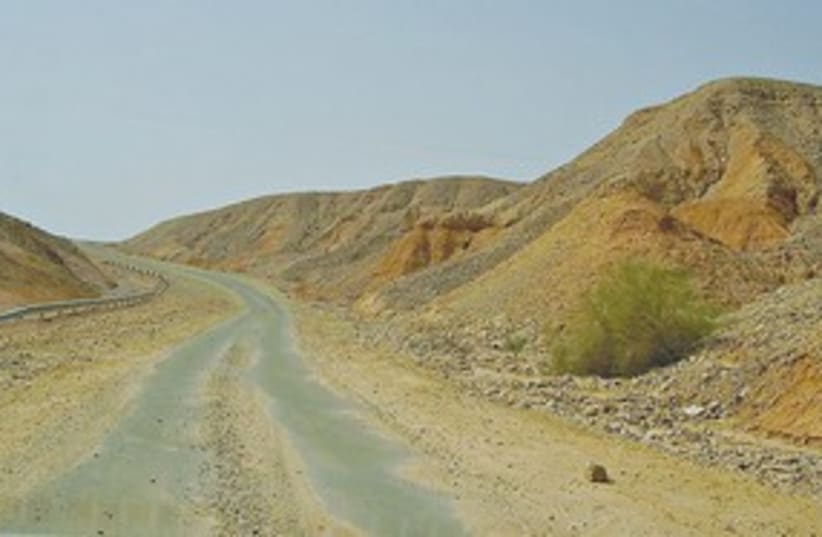What can Israel do to beautify its deteriorating image in the world and reverse its growing political isolation?
Why not teach the world’s hungry people to grow food in sand with brackish water, like Israeli farmers in the Negev, among the most productive and innovative in the world? With a serious and growing shortage of food worldwide, Israel can help tackle global hunger and perhaps radically change how Israel is perceived, including among Diaspora Jewry.
The Green Revolution pioneered by American agronomist Norman Borlaug caused grain prices to fall by 75 percent between 1950 and 1990. Borlaug developed high-yield disease-resistant varieties of wheat, doubling yields and keeping wheat prices low until around 2007. I recall dire predictions of global famine in the 1950s and 1960s. It never happened, because of Borlaug’s breakthrough.
However, after 2007, the price of rice, corn, soybeans and wheat effectively doubled, because of climate change, drought, rising population, local wars and biofuels, causing the number of hungry people in the world to rise to 1 billion, or one person in every seven. Grain prices are poised to rise again. And a good part of this crisis is man-made. Using corn, for instance, to make fuel for thirsty cars, instead of feeding hungry people, is pure folly. Fully a fourth of America’s corn crop goes to producing ethanol. Resulting higher food prices do more damage than lower gas prices do good.
A joint report by the UN Food and Agriculture Organization and the Organization for Economic Cooperation and Development warns that wheat and grain prices will be 15 to 40 percent higher over the coming 10 years. That means even more hungry people and major social unrest.
The problem is not lack of land. There is enough land in the world, over six acres per person. But there is not enough good, fertile land – only one arable acre per person. So the world needs to find ways to grow more food on poor land. And Israel definitely knows how.
Take, for instance, the western Negev. A drive down highway 232, the so-called Peace Road, is amazing. That road was supposed to carry dozens of trucks daily to and from Egypt after the 1979 peace agreement. But booming Egypt-Israel trade never happened. Instead, in the moshavim and kibbutzim in the region, you now see acres and acres of hothouses – plastic roofs covering organic cherry tomatoes, peppers, artichokes, all grown in sand on a plastic sheet, with drip irrigation (that also contains fertilizer) and no pesticides (only, perhaps, a light dusting of sulfur). Much of the produce is exported to Europe. Plants love the sand because their roots penetrate it easily. Much of the water comes from waste treatment plants in Gush Dan (the Tel Aviv metropolis). And the climate permits year-round crops.
In my travels, I often meet students and managers from developing countries. They are interested in Israeli silicon-and-bits high-tech but are particularly fascinated by my tales of high-tech agriculture, which could help feed the millions of hungry people in their nations. In Africa, India, China and elsewhere, there are huge tracts of arid land suitable for the plastic-and-drip technology of the Negev.
But sadly, inexplicably, there is widespread hunger in Israel itself. The “food physician,” Israel, should first heal itself, before battling famine elsewhere. There is plenty of food – it’s just that the working poor can’t afford it.
Food can be an avenue to peace between Israelis and Arabs. Last summer, I spoke with Dutch Deputy Prime Minister Maxime Verhagen when he visited the Haifa Technion. Later, he responded by e-mail to questions. “Peace can only last when people have foodon their tables, a roof over their heads and prospects for the future,” Verhagen wrote.
“The Netherlands sponsors a project to support Palestinian farmers in the growing of flowers, fruit and vegetables in the Gaza Strip. Seeds and seedlings for strawberries, sweet peppers and carnations are imported from Israel, grown in Gaza and exported to the world markets through Israel and the Netherlands. It is a practical example of the benefits of economic cooperation. The Netherlands is in close contact with the Israeli government to obtain permission for the exports. A total of 177 tons of strawberries, 154,000 stems of cut flowers and 1 ton of sweet peppers have been allowed to leave Gaza since the season began in late November 2010.”
Despite this, I recalled sadly how Gazans tore apart the hothouses in Netzarim, after the 2005 withdrawal from Gaza, instead of using them to feed their hungry children. Similar hothouses now thrive in the new B’nei Netzarim community in the western Negev.
Agronomist Borlaug once said, “If you desire peace, cultivate justice, but at the same time cultivate the fields to produce more bread, otherwise there will be no peace.” He was right. There is no greater insanity than the existence of a billion hungry people together with an equal number of people battling obesity.
Hunger causes social unrest. Higher food prices were a major cause of the recent uprising in Egypt. Even Israel’s social protest movement put heavy stress on rising food prices. Let Israel lead a war on hunger, at home and abroad, a war that fills hungry bellies and replaces rancor and protest with peace.
The writer is senior research fellow, at the S. Neaman Institute, Technion.
